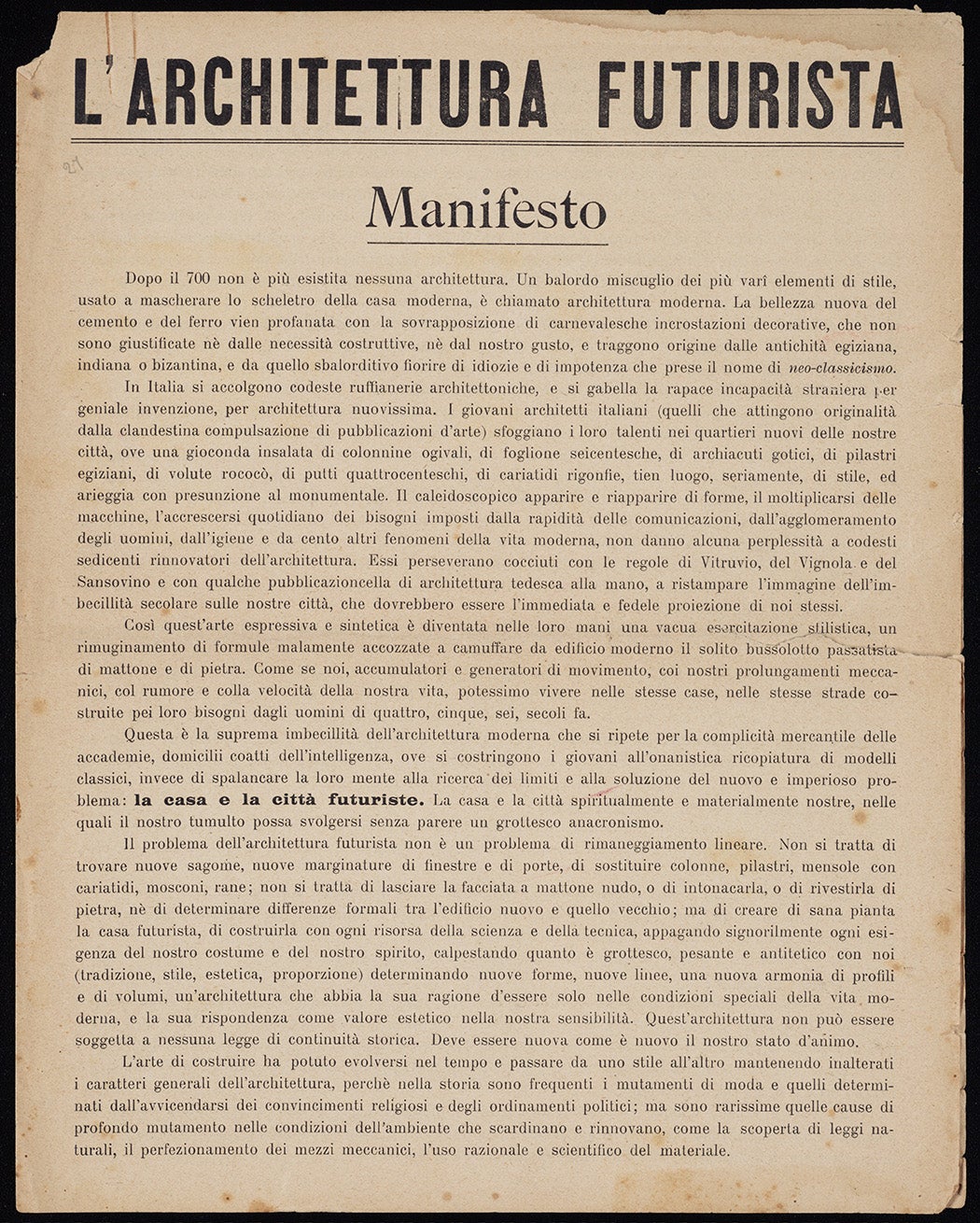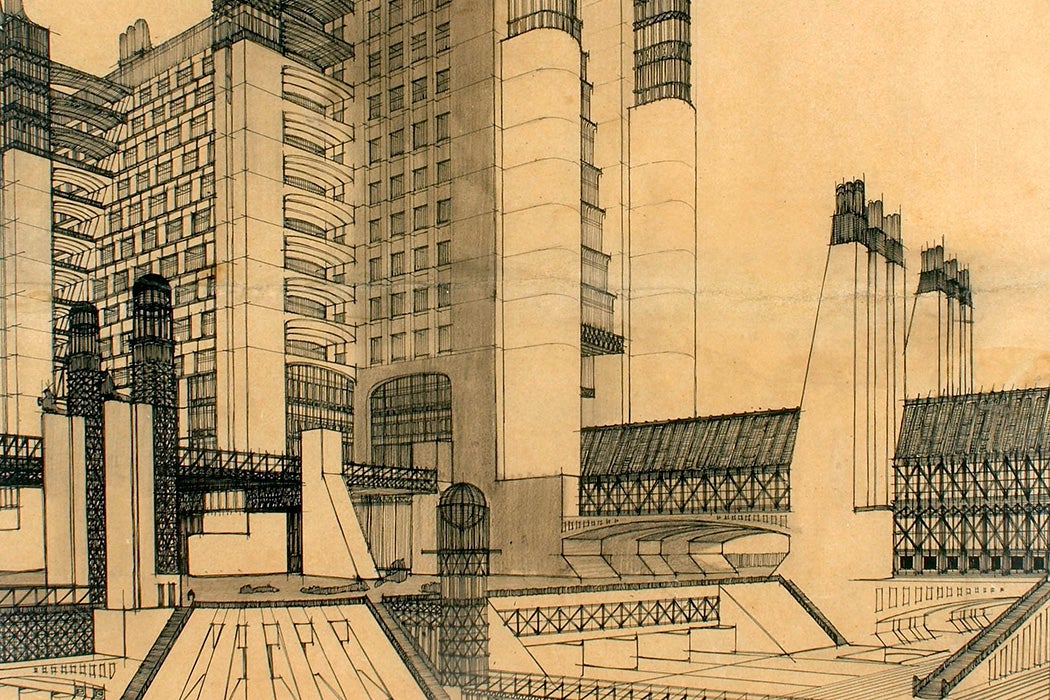Up-and-coming architects today have a plethora of options for disseminating their ideas about the built environment. They can share photos on Instagram and videos to YouTube and TikTok. They can engage in discussions over Twitter or Mastodon. Plus, there’s always Facebook. In the twenty-first century, social media has opened up an abundance of avenues for sharing architectural ideas, and, if one’s lucky, those ideas will resonate with the viewing public and go viral.
What about architects a century ago? In the early 1900s, young architects didn’t have the same possibilities that we have today for sharing their vision(s). But one option they did have was the manifesto. Manifestos helped define a new space where theories about architecture, both built and unbuilt, could be explored. And for European avant-garde architects in particular, manifestos became a major vehicle to express their philosophies.
The point of the manifesto was to declare and share the principles of one’s work. Manifestos were a way for experimental and radical architects to explain the new architectural designs they were pursuing, free from the definitions of the Greco-Roman tradition that had guided Western architectural design for so long.
Strong manifestos required strong connections between architecture and the written word. But beyond that, these texts—and the texts that evolved into magazines and books—established architecture within the mass media of the time.
Architectural historian Andrew Herscher explores the connections between architecture, typography, and mass media. As he explains,
More generally, an equivalence is here implied between the architectural object on the one hand, and the typographic sign on the other; as modern architecture “constructed” its functions, modern typography “constructed” the meaning of its texts. And as fully-functionalised means of construction, both modern architecture and modern typography constituted signifiers of modern culture, so that modern print media could constitute an alternative site of production to the building site, an alternative space of representation to the city.
That the printed word became an alternative site for architecture was a significant driver of the European avant-garde. The page became an unbounded space to explore buildings that would not or could not be built.
Another reason the architectural manifesto experienced such notable fertility in the first quarter of the twentieth century was that certain elements of society were already primed to explore fresh ideas. As urban historian Thérèse Tierney writes, “When World War I resulted in a social and cultural break with aristocratic aesthetic privilege, the efforts of the avant-garde…provided the means for early-20th-century architects to break with history.”

An example of the fruition of this historical period is the “Manifesto of Futurist Architecture” by Antonio Sant’Elia. The Italian Futurists comprised an avant-garde group that today is best known for its manifestos on everything, from art to cooking to love. Sant’Elia published the group’s first manifesto on architecture in 1914.
“The decorative must be abolished,” he declared.
The problem of Futurist architecture must not be solved by pilfering from photographs of China, Persia and Japan, or by mindlessly aping the rules of Vitruvius, but with flashes of genius, reinforced by scientific and technological experience. Everything must be revolutionized. Roofs and underground spaces must be taken full advantage of, the importance of the façade must be diminished, questions of good taste must be taken from the choice of busy little mouldings, pretty little capitals and darling doorways and given over to richer, more rewarding questions of massing and the vast disposition of planes. Let us call a halt to monumental, funereal, commemorative architecture. Let us blow up monuments, pavements, porticoes, stairways and sink the streets and piazzas, elevating the level of the cities.
Keeping in line with the expectations of Futurist aesthetics, Sant’Elia’s statement was bombastic and nationalistic. Like many architects of the time, he was exploring architecture’s potential, even if some of his ideas wouldn’t have been feasible at that moment. He rejected the Classical tradition and argued for an architecture that represented the modern world. It was time to disregard traditional building methods and embrace new technologies.
More than a century later, the manifesto continues to hold our attention, exemplifying a charged moment in architectural history, when architects were breaking with the past and using manifestos en masse to define the architecture of the future.
Tierney argues that the unique circumstances that produced compelling architectural manifestos in the early twentieth century didn’t continue after World War II.
“[B]y mid-century, with few exceptions, architectural discourse lagged behind the internal art debate because of the demands of a post-World War II building expansion,” she notes. “While isolated moments of critique and experimentation existed…the majority of architects were preoccupied with the demands of a rapidly expanding economy.”







